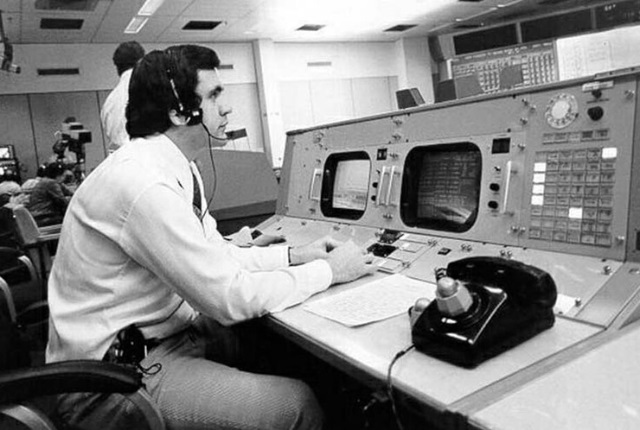Honoring Native American Heritage Month: Celebrating Contributions to Space Science
November 26, 2024November is Native American Heritage Month, celebrating the history and culture of Native American, Alaska Native, Native Hawaiian, and Pacific Islander communities of the United States. Throughout history, Native American innovators have made remarkable contributions across a wide range of fields. In this article, we highlight the groundbreaking achievements of Native American men and women who have shaped the field of Astronautical and Space Engineering. Their impactful work underscores the vital role of diversity in advancing science and technology, inspiring underrepresented communities to pursue careers in STEM and furthering our effective exploration of the vast universe.
John Bennett Herrington
John Bennett Herrington is a member of the Chickasaw Nation and the first Native American man to become an astronaut. He began his career as a Naval Aviator and “after earning a Master of Science degree in aeronautical engineering,” he was chosen as an astronaut candidate. In 2002, Herrington flew aboard the Space Shuttle Endeavour on mission STS-113 to the International Space Station. He performed spacewalks, which are commemorated on the 2019 Sacagawea dollar, as well as contributed to the assembly of the International Space Station and advancing the capabilities of human space exploration. With his naval and astronautical experience, he became commander of the NASA Aquanaut crew, where he worked underwater for ten sequential days during the NEEMO 6 mission in preparation for future space travel. After retiring from both the Navy and NASA, Herrington continues to inspire countless individuals, particularly Native American youth, to explore STEM careers through his advocacy initiatives and speaking engagements around the world.
Nicole Aunapu Mann
Nicole Aunapu Mann is a member of the Wailaki tribe of Round Valley who has a distinguished career in both aviation and space exploration. Mann made history as the first Native American woman to become a NASA astronaut and command a NASA space mission, where she led the SpaceX Crew-5 to the International Space Station in 2022, and stayed for six months. She was also a top candidate for the Artemis II mission to the Moon slated for 2025. With a Master of Science degree in Mechanical Engineering, Mann’s work also extends beyond space. She is an experienced test pilot and a Naval Academy graduate with over 2,500 flight hours in more than 25 different aircraft, including supersonic and fighter planes. Throughout her career, Mann has demonstrated leadership, technical expertise, and resilience, inspiring generations of Native youth to pursue STEM fields of study.
Mary Golda Ross
Mary Golda Ross, a member of the Cherokee Nation, was a teacher and pioneering aerospace engineer who made monumental contributions to the early days of the U.S. space program. As one of the first female engineers at Lockheed Martin, Ross was instrumental in developing many of the foundational technologies that would later support U.S. space missions, including “one of the first aircraft, the P-38 Lightning,” as well as satellite design, the Agena spacecraft, and early ideas for interplanetary travel. She contributed to the development of missile and space exploration systems, including work on the design of the Polaris missile, and had a hand in the conceptualization of future space exploration missions. Ross’s work was pivotal in shaping the landscape of American aerospace and space innovation.
Jerry Chris Elliot-High Eagle
Jerry Elliot-High Eagle is a member of the Osage and Cherokee Nations, physicist, and a former systems engineer at NASA until his retirement in 2007. After obtaining his Bachelor of Science in Physics, Elliot-High Eagle contributed to the development of several satellite systems and spacecraft. His work has also been crucial to improving the reliability and functionality of NASA’s space missions, including the safe trajectory and successful return of the famous Apollo 13 Moon landing mission. His impactful contributions garnered him the “Presidential Medal of Freedom, the highest civilian honor awarded by the President of the United States” in 1970. Soon after, he and other Native American scientists founded the American Indian Science and Engineering Society (AISES).
Elliot-High Eagle also started his own business, High Eagle Technologies, which “received a patent for a device to treat cancer and blood-related diseases” in 2019. His passion for space and technological advancement, as well as his commitment to Native American representation in STEM, is apparent throughout his distinguished career.
Aaron Yazzie
Aaron Yazzie, a member of the Navajo Nation, is a pioneering mechanical engineer whose contributions have been crucial to NASA's Mars missions. As a key engineer at NASA’s Jet Propulsion Laboratory (JPL), Yazzie played an instrumental role in the development and operation of the Perseverance rover, which successfully landed on Mars in 2021. He was directly involved in designing and testing the rover’s robotic arm and other critical systems used to collect samples from the Martian surface. Yazzie’s work not only advances our understanding of Mars but also highlights the importance of Indigenous perspectives in cutting-edge engineering and space science.
Beyond his technical achievements, Yazzie is a dedicated advocate for Native American youth. As a fellow of the American Indian Science and Engineering Society (AISES), he is deeply committed to outreach efforts, serving as a role model and inspiring the next generation of Native American students to explore opportunities in STEM. Through his work and mentorship, Yazzie continues to make a lasting impact on both the space industry and Indigenous communities.
Space Studies at Capitol Tech
Capitol Technology University’s Aviation and Astronautical Science programs are a gateway to space career opportunities. Whether your dream is to be a pilot or an astronaut, our expert faculty, industry-focused curricula, and state-of-the-art resources can help you attain your goal. Explore what it means to be a Capitol Tech innovator and pave your career in STEM today.
To learn more, contact our Admissions team or request more information.



